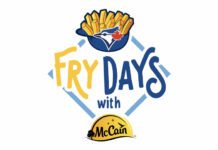Early on during this pandemic, The NPD Group completed a study that reported the number-1 thing Canadians missed during restaurant lockdowns was the ability to socialize with friends and family. More recently, we completed a study that
re-affirms the same sentiment. The difference with the most recent study is that we now have about a year of data to prove that people behaved exactly as they said they would.
On-premises visits began to re-bound as early as May 2020, according to The NPD Group/CREST foodservice industry tracker data, and the share of occasions represented by on-premise visits rose steadily until September. Both quick-service restaurants (QSR) and full-service restaurants (FSR) benefited from this lift. In fact, by the time restrictions began again in October, FSR had returned to serving more than half of all their customers in-person. Still a far cry from the historical average of about three quarters, but a 10-times increase over the single-digit trend experienced in April and May.
The best month for on-premise dining since the start of pandemic was September. Historically, the combination of end-of-summer celebrations with the return of back-to-school and back-to-work routines, help to provide the restaurant industry with a late-summer boost — and 2020 was no exception.
The easing of restrictions did not necessarily mean a trade-off between on- and off-premises visits. Instead, all occasions rose as consumers responded to the easing of restrictions with more confidence about consuming a restaurant meal, regardless of access mode.
After September’s boost, the second wave of infections began to take hold and the first recovery wave diminished. On-premise restaurant visits began to drop once again until bottoming out a second time in January. Come February, true to form, when restaurant restrictions were eased once again, especially in Ontario and Quebec, on-premise visits and share started to recover.
One other predictable trend with the return of visits is the inclination to consume more — and spend more. Average items consumed per eater and average spend per eater are almost universally higher for on-premise visits. Therefore, the economic benefits of welcoming customers back into the restaurants is much larger than the potential bump in traffic.
The re-opening of restaurants in Canada is likely to come with regulatory challenges, including ongoing capacity limits. This means fewer customers and fewer opportunities to generate those larger checks. From a consumer standpoint, our recent study affirmed that more than one-third of consumers will expect social-distancing protocols to be present when they visit a restaurant. The importance of selling as much as possible to each customer, therefore, takes on even greater significance.
The return of on-premise dining can be traced largely to a lift in the traditional sit-down meals of lunch and supper. This makes perfect sense since so many morning occasions are off-premise occasions anyway. Further, these occasions are most likely to depend on whether we have some where to go.
In terms of cohorts, the return to the market during the first wave of recovery was led by two groups. The 18-to-34-year-old cohort began to increase its share of visits soon after the lockdown and have been on a slow and steady growth trajectory ever since. Interestingly, the 55+ year-old cohort also helped to fuel the bump following the easing of restrictions. This cohort was the largest prior to the pandemic, but also the cohort that declined the most immediately following the initial lockdowns. By July, its share of on-premise visits had risen to traditional levels once again, only to fall back to the lowest level once again when restrictions returned in the fall.
The uptick in on-premise dining immediately following lockdowns confirms the pent-up demand to consume a restaurant meal — at a restaurant. News coverage from other markets around the world that have opened their restaurants supports that this sentiment is universal. Since the recoveries in between waves of infections were so short, it’s difficult to say how long this pent-up demand will generate positive momentum. Let’s hope the next recovery wave has a very long tail, and we get the opportunity to answer this question soon.
BY VINCE SGABELLONE


















